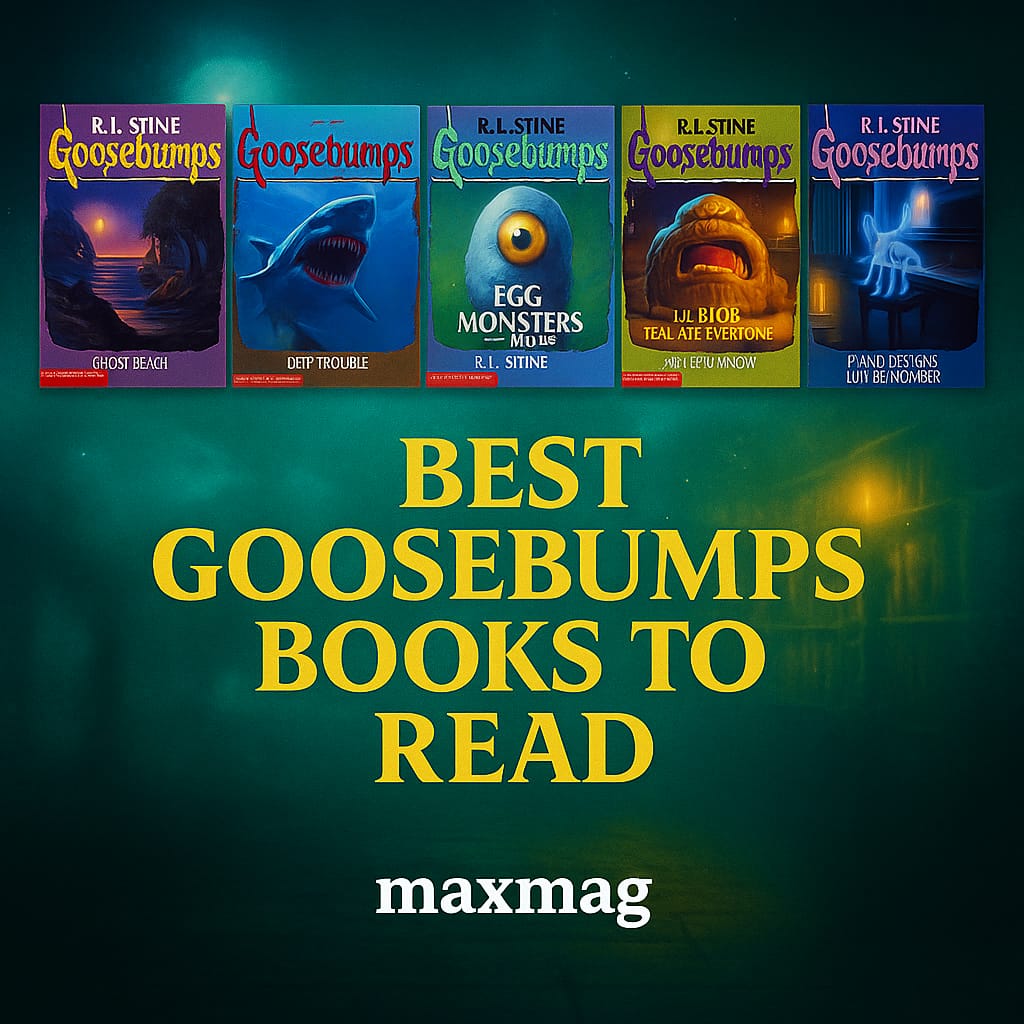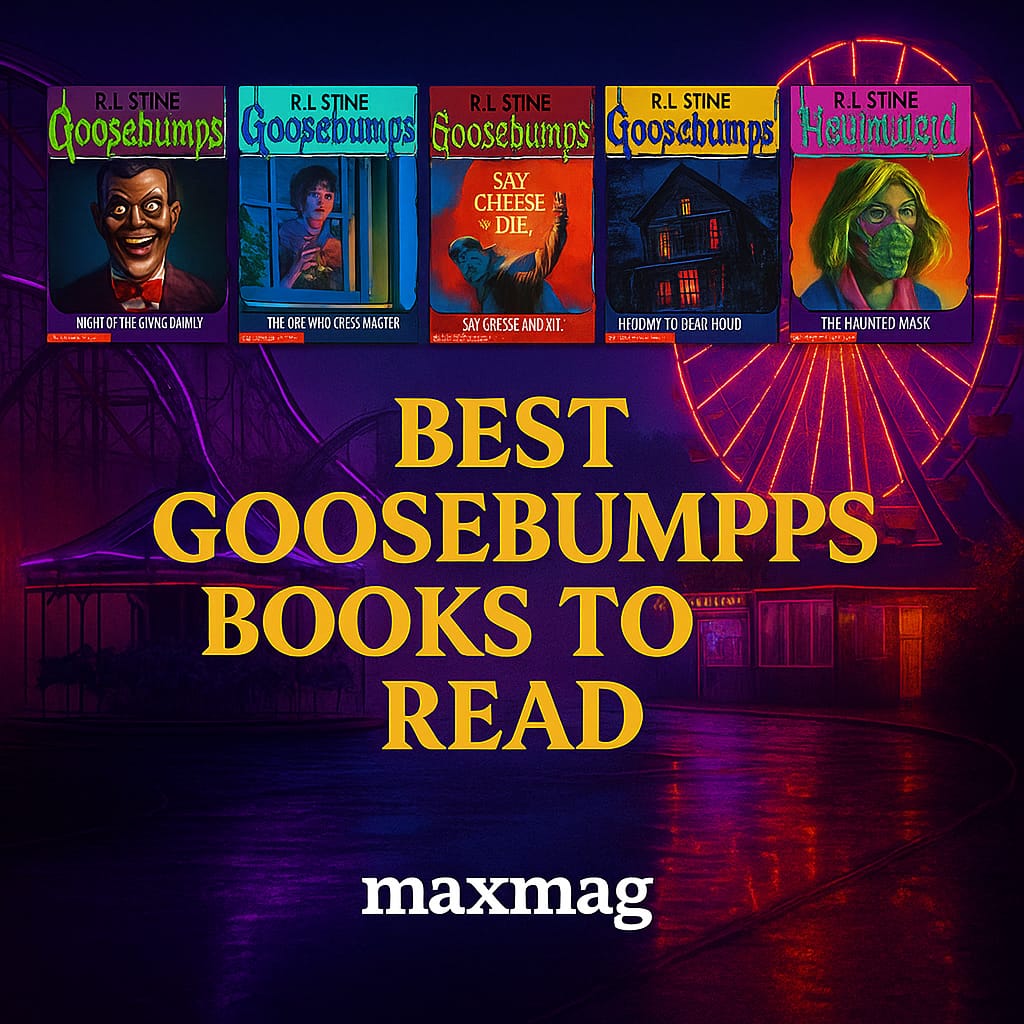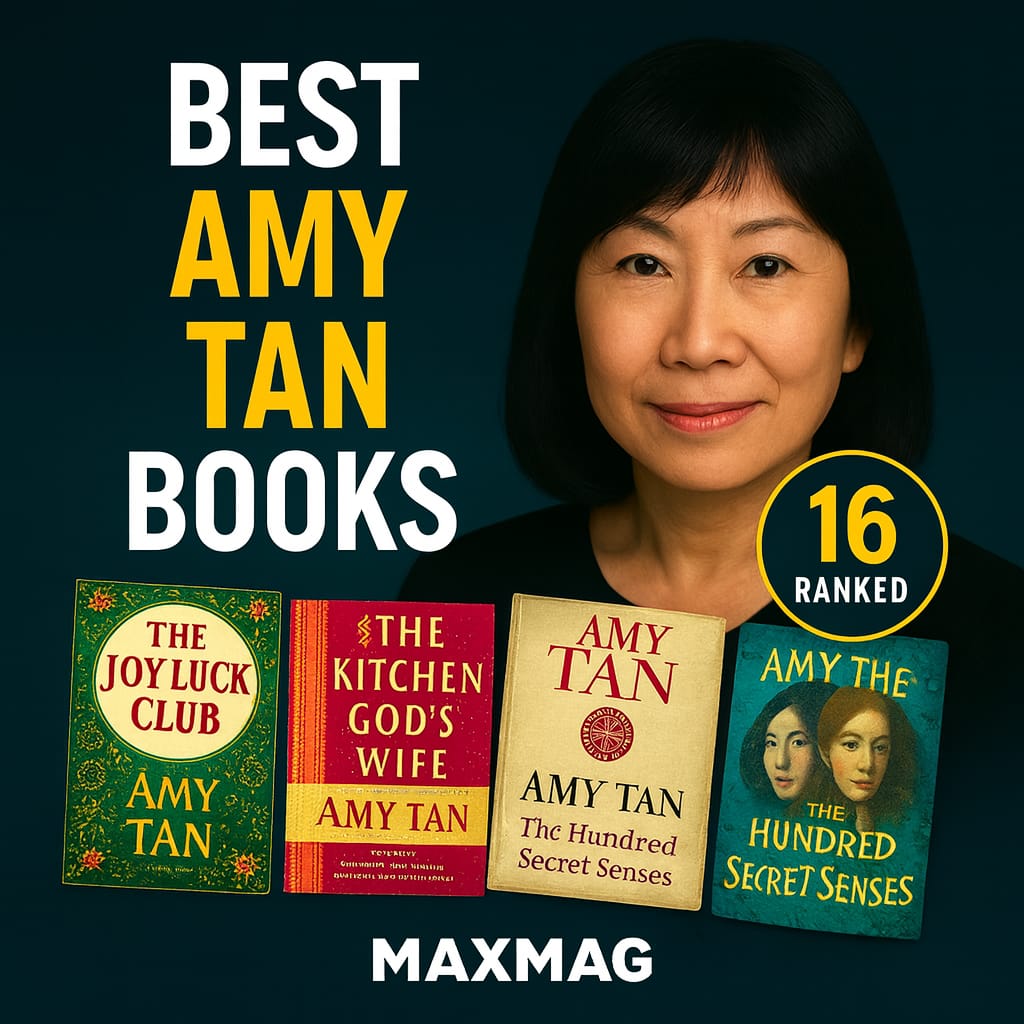
If you’re new to Goosebumps and curious, Best Goosebumps Books to Read is the doorway where reluctant readers discover that spooky can also be silly, fast, and fun. These top Goosebumps books give quick entry points for curious readers. These picks lean into cliffhanger chapters, kid-centered stakes, and twist endings that reward attention. We curated titles that balance genuine chills with humor so families can read together without nightmares. Short runtimes and everyday settings make the scares feel close to home but never truly unsafe. You’ll find haunted masks, camera curses, time-slip puzzles, and seaside specters that spark lively conversations. Each recommendation favors momentum, readability, and memorable villains like Slappy the Dummy. Ratings and reader buzz guided the selection so the page-turners rise to the top of the stack. Whether you’re starting a home library or planning a classroom unit, this list maps a friendly path through kid-level horror.
To create a reliable guide, we focused on installments with enduring popularity and solid community scores. These best-selling Goosebumps literature give quick entry points for curious readers. As you browse, you’ll spot where Best Goosebumps Books to Read overlap with elementary lessons on tone, foreshadowing, and structure. We organized the lineup to help you escalate scares gradually, moving from mystery-tinged tales to bolder frights. Parents will appreciate that stories resolve cleanly, while kids will love the last-page gotchas. Along the way, you’ll see how Stine remixes classic monsters with suburban humor and brisk pacing. Use this page as a seasonal reading plan, a birthday gift checklist, or a rainy‑day grab bag. Every title stands on its own, so you can jump anywhere without losing context. If a favorite hooks your reader, nearby picks echo its themes for easy next steps.
18 Best Goosebumps Books to Read — a Starter’s Guide for Families
For quick skimming, we group Best Goosebumps Books to Read by escalating tension so families can calibrate comfort levels.
1) Stay Out of the Basement – 1992
- Author: R. L. Stine
- Published: 1992
- Genre Tags: children’s horror, middle-grade, mad science
- Themes: family secrets, science gone wrong
- Goodreads Rating: 3.92/5
Stay Out of the Basement blends everyday kid problems with a creeping sense of danger that escalates just when safety feels close. These award-winning Goosebumps novels give quick entry points for curious readers. R. L. Stine anchors the scares in familiar settings so twists feel both surprising and inevitable. The plot pivots on family secrets, drawing readers into choices that spiral out of control. Short chapters and cliffhanger beats make it perfect for shared read‑alouds or independent sprints. Stine’s humor softens the edges without removing the genuine goosebumps, a balance that keeps pages turning. Fans who like children’s horror will appreciate how the story reshuffles classic horror toys for new readers. The book also shows how the series uses pattern and misdirection to teach pacing, tension, and payoff. In the end, it earns its place on any kid’s horror shelf by delivering a tidy twist with after‑dark staying power.
2) One Day at HorrorLand – 1994
- Author: R. L. Stine
- Published: 1994
- Genre Tags: children’s horror, adventure, monsters
- Themes: theme parks, deception, survival games
- Goodreads Rating: 3.91/5
One Day at HorrorLand blends everyday kid problems with a creeping sense of danger that escalates just when safety feels close. R. L. Stine anchors the scares in familiar settings so twists feel both surprising and inevitable. Best Goosebumps Books to Read often highlight how approachable Stine’s scares are for new readers. The plot pivots on theme parks, drawing readers into choices that spiral out of control. Short chapters and cliffhanger beats make it perfect for shared read‑alouds or independent sprints. Stine’s humor softens the edges without removing the genuine goosebumps, a balance that keeps pages turning. Fans who like children’s horror will appreciate how the story reshuffles classic horror toys for new readers. The book also shows how the series uses pattern and misdirection to teach pacing, tension, and payoff. In the end, it earns its place on any kid’s horror shelf by delivering a tidy twist with after‑dark staying power.
3) The Ghost Next Door – 1993
- Author: R. L. Stine
- Published: 1993
- Genre Tags: children’s horror, supernatural, mystery
- Themes: loneliness, misunderstandings, identity
- Goodreads Rating: 3.90/5
The Ghost Next Door blends everyday kid problems with a creeping sense of danger that escalates just when safety feels close. R. L. Stine anchors the scares in familiar settings so twists feel both surprising and inevitable. The plot pivots on loneliness, drawing readers into choices that spiral out of control. Short chapters and cliffhanger beats make it perfect for shared read‑alouds or independent sprints. Stine’s humor softens the edges without removing the genuine goosebumps, a balance that keeps pages turning. Fans who like children’s horror will appreciate how the story reshuffles classic horror toys for new readers. The book also shows how the series uses pattern and misdirection to teach pacing, tension, and payoff. In the end, it earns its place on any kid’s horror shelf by delivering a tidy twist with after‑dark staying power.
4) Welcome to Camp Nightmare – 1993
- Author: R. L. Stine
- Published: 1993
- Genre Tags: children’s horror, summer camp, twist ending
- Themes: friendship tests, authority, courage
- Goodreads Rating: 3.89/5
Welcome to Camp Nightmare blends everyday kid problems with a creeping sense of danger that escalates just when safety feels close. R. L. Stine anchors the scares in familiar settings so twists feel both surprising and inevitable. The plot pivots on friendship tests, drawing readers into choices that spiral out of control. Short chapters and cliffhanger beats make it perfect for shared read‑alouds or independent sprints. Stine’s humor softens the edges without removing the genuine goosebumps, a balance that keeps pages turning. Fans who like children’s horror will appreciate how the story reshuffles classic horror toys for new readers. The book also shows how the series uses pattern and misdirection to teach pacing, tension, and payoff. In the end, it earns its place on any kid’s horror shelf by delivering a tidy twist with after‑dark staying power.
5) A Night in Terror Tower – 1995
- Author: R. L. Stine
- Published: 1995
- Genre Tags: children’s horror, historical, chase
- Themes: time travel, pursuit, memory
- Goodreads Rating: 3.89/5
A Night in Terror Tower blends everyday kid problems with a creeping sense of danger that escalates just when safety feels close. These classic Goosebumps stories give quick entry points for curious readers. R. L. Stine anchors the scares in familiar settings so twists feel both surprising and inevitable. The plot pivots on time travel, drawing readers into choices that spiral out of control. Short chapters and cliffhanger beats make it perfect for shared read‑alouds or independent sprints. Stine’s humor softens the edges without removing the genuine goosebumps, a balance that keeps pages turning. Fans who like children’s horror will appreciate how the story reshuffles classic horror toys for new readers. The book also shows how the series uses pattern and misdirection to teach pacing, tension, and payoff. In the end, it earns its place on any kid’s horror shelf by delivering a tidy twist with after‑dark staying power.
6) The Cuckoo Clock of Doom – 1995
- Author: R. L. Stine
- Published: 1995
- Genre Tags: children’s horror, time loop, prank gone wrong
- Themes: regret, second chances, family
- Goodreads Rating: 3.88/5
The Cuckoo Clock of Doom blends everyday kid problems with a creeping sense of danger that escalates just when safety feels close. R. L. Stine anchors the scares in familiar settings so twists feel both surprising and inevitable. Best Goosebumps Books to Read often highlight how approachable Stine’s scares are for new readers. The plot pivots on regret, drawing readers into choices that spiral out of control. Short chapters and cliffhanger beats make it perfect for shared read‑alouds or independent sprints. Stine’s humor softens the edges without removing the genuine goosebumps, a balance that keeps pages turning. Fans who like children’s horror will appreciate how the story reshuffles classic horror toys for new readers. The book also shows how the series uses pattern and misdirection to teach pacing, tension, and payoff. In the end, it earns its place on any kid’s horror shelf by delivering a tidy twist with after‑dark staying power.
Mid‑List Checkpoint: More Best Goosebumps Books to Read You Shouldn’t Miss
7) The Haunted Mask – 1993
- Author: R. L. Stine
- Published: 1993
- Genre Tags: children’s horror, Halloween, cursed object
- Themes: identity, bullying, consequences
- Goodreads Rating: 3.87/5
The Haunted Mask blends everyday kid problems with a creeping sense of danger that escalates just when safety feels close. R. L. Stine anchors the scares in familiar settings so twists feel both surprising and inevitable. The plot pivots on identity, drawing readers into choices that spiral out of control. Short chapters and cliffhanger beats make it perfect for shared read‑alouds or independent sprints. Stine’s humor softens the edges without removing the genuine goosebumps, a balance that keeps pages turning. Fans who like children’s horror will appreciate how the story reshuffles classic horror toys for new readers. The book also shows how the series uses pattern and misdirection to teach pacing, tension, and payoff. In the end, it earns its place on any kid’s horror shelf by delivering a tidy twist with after‑dark staying power.
8) Welcome to Dead House – 1992
- Author: R. L. Stine
- Published: 1992
- Genre Tags: children’s horror, haunted town, undead
- Themes: new beginnings, town secrets, belonging
- Goodreads Rating: 3.86/5
Welcome to Dead House blends everyday kid problems with a creeping sense of danger that escalates just when safety feels close. R. L. Stine anchors the scares in familiar settings so twists feel both surprising and inevitable. The plot pivots on new beginnings, drawing readers into choices that spiral out of control. Short chapters and cliffhanger beats make it perfect for shared read‑alouds or independent sprints. Stine’s humor softens the edges without removing the genuine goosebumps, a balance that keeps pages turning. Fans who like children’s horror will appreciate how the story reshuffles classic horror toys for new readers. The book also shows how the series uses pattern and misdirection to teach pacing, tension, and payoff. In the end, it earns its place on any kid’s horror shelf by delivering a tidy twist with after‑dark staying power.
9) The Scarecrow Walks at Midnight – 1994
- Author: R. L. Stine
- Published: 1994
- Genre Tags: children’s horror, farm setting, animated scarecrows
- Themes: rural fear, superstition, control
- Goodreads Rating: 3.85/5
The Scarecrow Walks at Midnight blends everyday kid problems with a creeping sense of danger that escalates just when safety feels close. These essential Goosebumps reading give quick entry points for curious readers. R. L. Stine anchors the scares in familiar settings so twists feel both surprising and inevitable. Best Goosebumps Books to Read often highlight how approachable Stine’s scares are for new readers. The plot pivots on rural fear, drawing readers into choices that spiral out of control. Short chapters and cliffhanger beats make it perfect for shared read‑alouds or independent sprints. Stine’s humor softens the edges without removing the genuine goosebumps, a balance that keeps pages turning. Fans who like children’s horror will appreciate how the story reshuffles classic horror toys for new readers. The book also shows how the series uses pattern and misdirection to teach pacing, tension, and payoff. In the end, it earns its place on any kid’s horror shelf by delivering a tidy twist with after‑dark staying power.

10) Say Cheese and Die! – 1992
- Author: R. L. Stine
- Published: 1992
- Genre Tags: children’s horror, cursed camera, premonition
- Themes: fate, curiosity, responsibility
- Goodreads Rating: 3.85/5
Say Cheese and Die! blends everyday kid problems with a creeping sense of danger that escalates just when safety feels close. R. L. Stine anchors the scares in familiar settings so twists feel both surprising and inevitable. The plot pivots on fate, drawing readers into choices that spiral out of control. Short chapters and cliffhanger beats make it perfect for shared read‑alouds or independent sprints. Stine’s humor softens the edges without removing the genuine goosebumps, a balance that keeps pages turning. Fans who like children’s horror will appreciate how the story reshuffles classic horror toys for new readers. The book also shows how the series uses pattern and misdirection to teach pacing, tension, and payoff. In the end, it earns its place on any kid’s horror shelf by delivering a tidy twist with after‑dark staying power.
11) The Girl Who Cried Monster – 1993
- Author: R. L. Stine
- Published: 1993
- Genre Tags: children’s horror, librarian mystery, twist
- Themes: truth vs belief, curiosity, consequences
- Goodreads Rating: 3.84/5
The Girl Who Cried Monster blends everyday kid problems with a creeping sense of danger that escalates just when safety feels close. R. L. Stine anchors the scares in familiar settings so twists feel both surprising and inevitable. The plot pivots on truth vs belief, drawing readers into choices that spiral out of control. Short chapters and cliffhanger beats make it perfect for shared read‑alouds or independent sprints. Stine’s humor softens the edges without removing the genuine goosebumps, a balance that keeps pages turning. Fans who like children’s horror will appreciate how the story reshuffles classic horror toys for new readers. The book also shows how the series uses pattern and misdirection to teach pacing, tension, and payoff. In the end, it earns its place on any kid’s horror shelf by delivering a tidy twist with after‑dark staying power.
12) Night of the Living Dummy – 1993
- Author: R. L. Stine
- Published: 1993
- Genre Tags: children’s horror, evil dummy, ventriloquism
- Themes: jealousy, sibling rivalry, autonomy
- Goodreads Rating: 3.84/5
Night of the Living Dummy blends everyday kid problems with a creeping sense of danger that escalates just when safety feels close. R. L. Stine anchors the scares in familiar settings so twists feel both surprising and inevitable. The plot pivots on jealousy, drawing readers into choices that spiral out of control. Short chapters and cliffhanger beats make it perfect for shared read‑alouds or independent sprints. Stine’s humor softens the edges without removing the genuine goosebumps, a balance that keeps pages turning. Fans who like children’s horror will appreciate how the story reshuffles classic horror toys for new readers. The book also shows how the series uses pattern and misdirection to teach pacing, tension, and payoff. In the end, it earns its place on any kid’s horror shelf by delivering a tidy twist with after‑dark staying power.
Turning the Page: Discover Best Goosebumps Books to Read Beyond the Classics
13) Piano Lessons Can Be Murder – 1993
- Author: R. L. Stine
- Published: 1993
- Genre Tags: children’s horror, music, ghosts
- Themes: practice vs perfection, obsession, haunting
- Goodreads Rating: 3.84/5
Piano Lessons Can Be Murder blends everyday kid problems with a creeping sense of danger that escalates just when safety feels close. These must-read Goosebumps picks give quick entry points for curious readers. R. L. Stine anchors the scares in familiar settings so twists feel both surprising and inevitable. The plot pivots on practice vs perfection, drawing readers into choices that spiral out of control. Short chapters and cliffhanger beats make it perfect for shared read‑alouds or independent sprints. Stine’s humor softens the edges without removing the genuine goosebumps, a balance that keeps pages turning. Fans who like children’s horror will appreciate how the story reshuffles classic horror toys for new readers. The book also shows how the series uses pattern and misdirection to teach pacing, tension, and payoff. In the end, it earns its place on any kid’s horror shelf by delivering a tidy twist with after‑dark staying power.
14) The Blob That Ate Everyone – 1997
- Author: R. L. Stine
- Published: 1997
- Genre Tags: children’s horror, meta-fiction, slime monster
- Themes: imagination, creation, consequences
- Goodreads Rating: 3.83/5
The Blob That Ate Everyone blends everyday kid problems with a creeping sense of danger that escalates just when safety feels close. R. L. Stine anchors the scares in familiar settings so twists feel both surprising and inevitable. Best Goosebumps Books to Read often highlight how approachable Stine’s scares are for new readers. The plot pivots on imagination, drawing readers into choices that spiral out of control. Short chapters and cliffhanger beats make it perfect for shared read‑alouds or independent sprints. Stine’s humor softens the edges without removing the genuine goosebumps, a balance that keeps pages turning. Fans who like children’s horror will appreciate how the story reshuffles classic horror toys for new readers. The book also shows how the series uses pattern and misdirection to teach pacing, tension, and payoff. In the end, it earns its place on any kid’s horror shelf by delivering a tidy twist with after‑dark staying power.
15) Egg Monsters from Mars – 1996
- Author: R. L. Stine
- Published: 1996
- Genre Tags: children’s horror, aliens, laboratory
- Themes: curiosity, secrecy, science
- Goodreads Rating: 3.83/5
Egg Monsters from Mars blends everyday kid problems with a creeping sense of danger that escalates just when safety feels close. R. L. Stine anchors the scares in familiar settings so twists feel both surprising and inevitable. The plot pivots on curiosity, drawing readers into choices that spiral out of control. Short chapters and cliffhanger beats make it perfect for shared read‑alouds or independent sprints. Stine’s humor softens the edges without removing the genuine goosebumps, a balance that keeps pages turning. Fans who like children’s horror will appreciate how the story reshuffles classic horror toys for new readers. The book also shows how the series uses pattern and misdirection to teach pacing, tension, and payoff. In the end, it earns its place on any kid’s horror shelf by delivering a tidy twist with after‑dark staying power.
16) Deep Trouble – 1994
- Author: R. L. Stine
- Published: 1994
- Genre Tags: children’s horror, sea creatures, adventure
- Themes: discovery, family bonds, ocean mystery
- Goodreads Rating: 3.82/5
Deep Trouble blends everyday kid problems with a creeping sense of danger that escalates just when safety feels close. R. L. Stine anchors the scares in familiar settings so twists feel both surprising and inevitable. The plot pivots on discovery, drawing readers into choices that spiral out of control. Short chapters and cliffhanger beats make it perfect for shared read‑alouds or independent sprints. Stine’s humor softens the edges without removing the genuine goosebumps, a balance that keeps pages turning. Fans who like children’s horror will appreciate how the story reshuffles classic horror toys for new readers. The book also shows how the series uses pattern and misdirection to teach pacing, tension, and payoff. In the end, it earns its place on any kid’s horror shelf by delivering a tidy twist with after‑dark staying power.
17) The Haunted School – 1997
- Author: R. L. Stine
- Published: 1997
- Genre Tags: children’s horror, alternate dimension, school
- Themes: rules, conformity, escape
- Goodreads Rating: 3.82/5
The Haunted School blends everyday kid problems with a creeping sense of danger that escalates just when safety feels close. These fan-favorite Goosebumps titles give quick entry points for curious readers. R. L. Stine anchors the scares in familiar settings so twists feel both surprising and inevitable. The plot pivots on rules, drawing readers into choices that spiral out of control. Short chapters and cliffhanger beats make it perfect for shared read‑alouds or independent sprints. Stine’s humor softens the edges without removing the genuine goosebumps, a balance that keeps pages turning. Fans who like children’s horror will appreciate how the story reshuffles classic horror toys for new readers. The book also shows how the series uses pattern and misdirection to teach pacing, tension, and payoff. In the end, it earns its place on any kid’s horror shelf by delivering a tidy twist with after‑dark staying power.
18) Ghost Beach – 1994
- Author: R. L. Stine
- Published: 1994
- Genre Tags: children’s horror, seaside, ghosts
- Themes: tradition, outsiders, trust
- Goodreads Rating: 3.83/5
Ghost Beach blends everyday kid problems with a creeping sense of danger that escalates just when safety feels close. R. L. Stine anchors the scares in familiar settings so twists feel both surprising and inevitable. Best Goosebumps Books to Read often highlight how approachable Stine’s scares are for new readers. The plot pivots on tradition, drawing readers into choices that spiral out of control. Short chapters and cliffhanger beats make it perfect for shared read‑alouds or independent sprints. Stine’s humor softens the edges without removing the genuine goosebumps, a balance that keeps pages turning. Fans who like children’s horror will appreciate how the story reshuffles classic horror toys for new readers. The book also shows how the series uses pattern and misdirection to teach pacing, tension, and payoff. In the end, it earns its place on any kid’s horror shelf by delivering a tidy twist with after‑dark staying power.
About Goosebumps Books and Why Readers Love Them
Goosebumps began in the early 1990s as a brisk, punchy take on kid‑friendly chills, and it quickly expanded into a multimedia phenomenon with TV adaptations, audiobooks, graphic novels, and stage shows. The series distilled haunted houses, living dummies, cursed objects, and time‑slips into bite‑size chapters that invite reluctant readers to keep going. Pacing, twisty chapter breaks, and plain‑spoken humor form a blueprint that many later middle‑grade fright series borrowed or re‑mixed. Libraries and classrooms use these titles as confidence builders that teach prediction and tone without heavy vocabulary loads. As a parent‑friendly map, many librarians recommend starting with Best Goosebumps Books to Read before exploring adjacent series.
Historically, the franchise rides the wave of child‑centered horror that followed the 1980s boom, but it stands apart for its cheerful restraint and punchline twists. As publishing diversified, Goosebumps continued to offer approachable frights that respect young readers’ boundaries without diluting suspense. The books’ modular plots make them ideal for episodic adaptations, and nostalgia has brought caregivers back to the series with their own kids. Educators and librarians note the books’ high completion rate, which encourages sustained reading habits.
Conclusion
Goosebumps remains a welcoming on‑ramp to suspense, proving that thrills and laughter can share the same page without tipping into nightmare fuel. The series’ clean structure, brisk pace, and cheeky reversals give young readers the tools to anticipate clues and talk about mood, while caregivers get bite‑size chapters perfect for busy evenings. For a broader look at craft and audience, see this thoughtful interview with R. L. Stine from The Guardian, and for why controlled frights can actually benefit us, consider this accessible explainer on recreational fear from Smithsonian Magazine. For families building a shelf of Best Goosebumps Books to Read, these picks keep things thrilling but kind.
Use this list as a flexible roadmap: begin with a comfort‑zone pick, try one twistier time‑travel tale, then end with a laugh‑out‑loud monster romp. Swap roles and let young readers choose the nightly chapter, or pair a spooky book with a creative project like designing a safer monster. Read them in any order, revisit seasonal favorites, and keep an eye on new reissues that refresh the covers for a new generation. However you approach it, the goal is simple: make reading feel like play and keep the library card busy.
FAQ: Best Goosebumps Books to Read
What age range is right for Goosebumps, and how can families pace the scares?
Which book should absolute beginners try first?
Is there continuity between books?
Are the stories too scary for sensitive readers?
What’s a good way to extend the reading experience?






